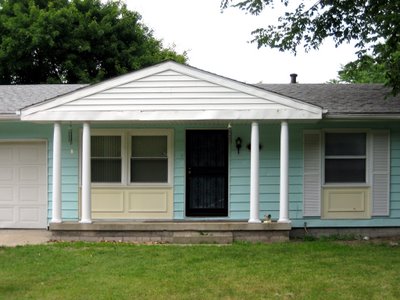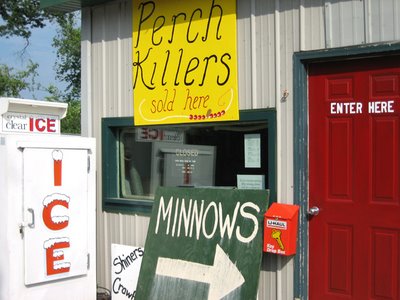Saturday, July 22, 2006
Tuesday, July 18, 2006
Zoning Rant

Read the article at the following link and then return to read my post:
In Santa Fe, an Architectural Battle Goes Casa a CasaHaving been to Sante Fe several times, I recall and can understand the desire to promote more adobe buildings that match the surrounding buildings. There is no question that more abode buildings will further the illusion that an invented historical community projects. It's interesting that just last night I read an article about a guy, Gilles Trehin, who has spent the last twenty years or more documenting (i.e. drawing and writing about) an imaginary city in France. People seem to be heavily preoccupied with living in the past or in some state other than reality. (“Man cannot bear too much reality. – T. S. Elliot)
The entire case for historic districts ignites the question: Why? I can support the idea that certain (few) buildings should be designated as historically important and therefore should be preserved, but I have trouble with wholesale designations that usually include a percentage (or majority) of mediocre buildings that have no historical significance whatsoever. What, exactly does a community require of a property owner when he or she wishes to remodel or replace a poor example within a historic district? How can rules be efficiently and fairly applied, in the absence of any defined rules? Don't tell me that some committee (possibly the very people responsible for bad architecture) or a committee of neighbors (perhaps including color-blind or even entirely blind ones) will do this extemporaneously. This is simply not an acceptable approach.
Certainly, I too respond positively to the visual and psychological atmosphere that such areas capture and strive to maintain. But, I believe that owners of residential property, short of being strangled by a deed restriction, should have the right to choose what their home looks like. Am I willing to take a risk that my neighbor will make poor choices? Absolutely yes! You should see some of the horrible buildings in my neighborhood. And you know what? Life goes on.
I think that zoning could/should include a category called "Tourist District," or “Disney District,” or something like that, which would be a zone of similar buildings that capitalize on that nostalgic atmosphere that their architecture exudes and promotes. Such districts would have remarkably strict regulations regarding design, scale, colors, materials, hardware, and mandatory design reviews. Like the inside of
Wednesday, July 12, 2006
Tuesday, July 04, 2006
Road Trip: Indiana

This past Saturday we took a road trip to
When I was young, before they invented Zip Codes, there was a hotel in
We arrived in
Lenard’s Casino
The hotel was not particularly large. My memory is three stories, with the lobby at the mid level (i.e. street level), which was reach through a spectacular botanic garden. The building, my recollection is, was stone. The train depot, which I recently learned is in the Spanish Colonial Revival style, a style that railroad magnat Samuel Insul favored. I also recently learned that the
Although we stayed at Lenard’s Casino many summers, a week or ten days at a time, I only remember staying in a room on the second floor. Knowing my mother, she probably asked for the same room each time. The rooms were tiny, which didn't matter because we spent our entire days on the beach, and there was no air conditioning, except in the restaurant. Ceiling fans cooled groups of guests who played cards in the lobby. There was a large patio in the garden, reached by a stone path, surrounded by towering sunflowers and other flowering plants, where my mother would broil in the sun while I played on the beach with a kid named Butch Lenard, one of sons of the owners, who happened to be around my age. On the weekends, which brought throngs of people from
Because our meals were included in the weekly rate, we dined like royalty. I favored deep-fried jumbo shrimp, followed by orange sherbet for desert. I recall one particular evening, when a couple of dozen guests assembled on the patio to watch another glorious sunset. A man and women, approximately my mother’s age, struck up a conversation. I recall feeling incredibly awkward with these strangers, until the man turned to me and asked what I planned to do when I grew up. Thankfully, here was a topic on which I could speak with confidence. I replied, without hesitation and with a seriousness that only Sean Connery can muster up, “I’m going to join the CIA and be spy.”
The Solar Eclipse
July 20, 1963 brought a total solar eclipse. I was twelve and my recollection of that day remains vivid. There was a record crowd at Lenard’s Casino that weekend and it was furnace-hot. Everyone was slathered in baby oil, their skin bronze-turning-black. I recall the bikini-clad women, arranged like so many sardines on the beach, with foil covered cardboard reflectors strategically positioned around their faces. In fear of missing any rays, they would only occasionally move, re-aiming the reflectors to improve their toasting effect. Of course, Butch and I, even darker from spending endless days in the sun, would wander around the nearly naked guests, blatantly staring; not understanding our sudden carnal attraction to all this near-nakedness. The women’s cleavage was deep, dark and oily and the glistening men wore tiny Speedos which provided obscene emphasis to their manhood. That afternoon, however, nearly all of these people were on their feet, hoping gingerly from towel to towel to avoid the scorching sand, sharing glimpses into small boxes that allowed a silhouette view of a small image of the sun (a pinhole image, actually) inside. To our delight, as the eclipse approached, one of the beautiful creatures called to us and allowed us to peer into her box. We glanced inside while she took advantage of the moment to pour another helping of baby oil over her. We watched, like desperate wolves, as she vigorously massaged the stuff over her body. We feigned fascination with the box. Once she had reached all the parts she could reach, she enlisted us to smear it on her back. We hesitated, but agreed. First Butch, than me. “Lower,” she commanded. I smeared dangerously close to the line of her bikini bottom. Of course, distracted in this way, we missed the eclipse altogether.
The Red Lantern
Years later, I took my mother and my Aunt back to
The Architecture
The development of Beverly Shores by Frederick H. Bartlett Company, the large real estate developer, began in 1927 on the heels of the development of an interurban rail line. The railroad commissioned a series of posters, now collectibles, to lure travelers. Meanwhile,
The son of the developer of
In my internet research yesterday, I learned that the hotel, Lenard’s Casino, was in fact built by
Even as a kid, I recognized that there was something special about the houses along
Below are links to photos of the trip:






